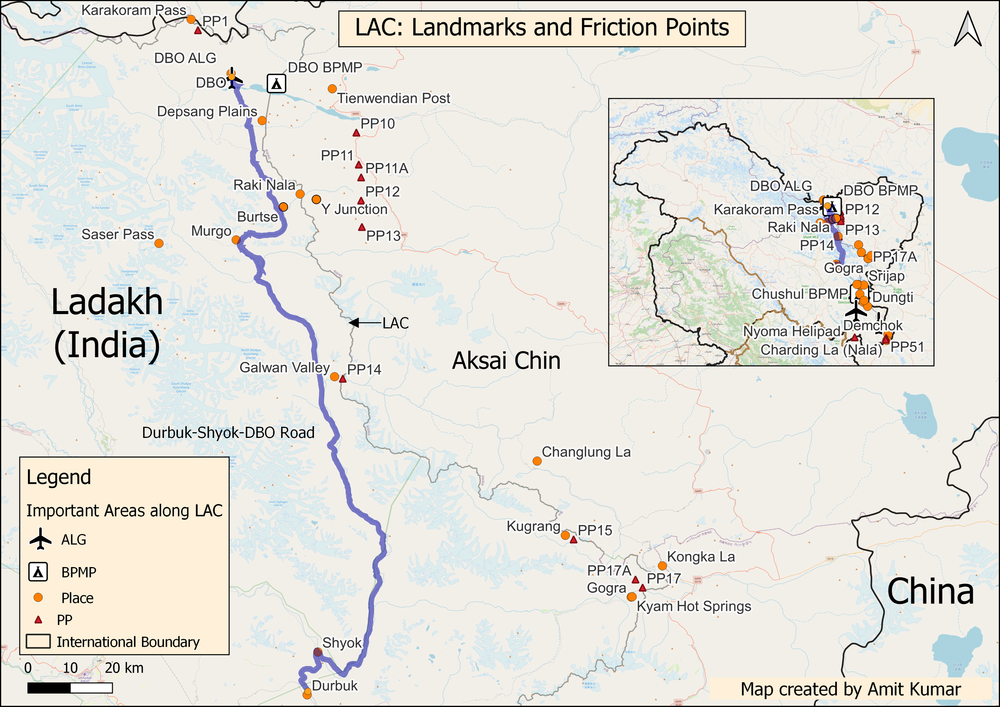Anushka Saxena, Amit Kumar
Key Judgements
Chinese aggression along the Line of Actual Control (LAC) since April 2020, resulting in an ensuing military standoff with India, has fundamentally transformed bilateral relations, by undermining any ‘mutual trust’ built across years of diplomatic effort since the conclusion of the 1993 Border Peace and Tranquility Agreement.
People’s Republic of China’s (PRC’s) objectives behind assertion along the LAC extend beyond mere territorial claims. Using sustained military pressure under a certain threshold, the PRC is seeking to coerce Indian policymakers into strategic acquiescence, as it seeks to craft a unipolar Asian order. Consequently, tensions and volatility along the LAC is likely to persist for the foreseeable future.
New Delhi, therefore, must not view the situation along the LAC within a limited context and must adopt a diverse set of actions to respond to the strategic gambit along the LAC. These include deployments that signal that India is ready for longer and drawn-out tensions along the LAC, pursuit of asymmetric countermeasures such as electronic and information warfare, development of maritime power, and partnering with countervailing coalitions against China.
Finally, India’s defence spending must account for these requirements. On this front, Delhi must focus much more on capital outlays and combat capability enhancement. A 44 per cent increase in operational spending and a 57 per cent increase in the capital outlay for modernization and infrastructure development in the FY 2022-23 budget point to positive trends in this regard.

Western LAC/ Ladakh (Map by Amit Kumar)
No comments:
Post a Comment